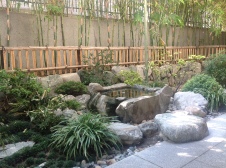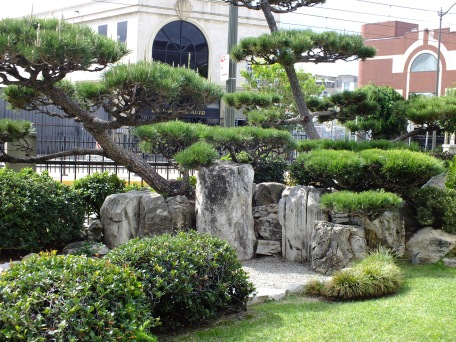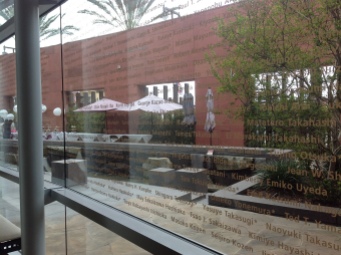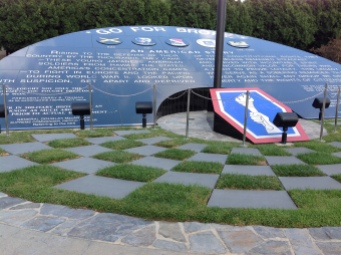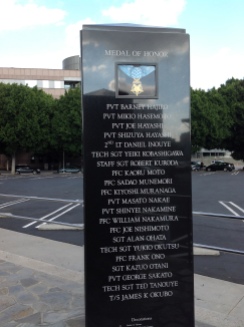https://www.noguchi.org/programs/public/noguchi-talks-marc-keane-and-matthew-kirsch-japanese-gardens-may-11-2019
|
||||||||||||||||||||||
 |
||||||||||||||||||||||
|
||||||||||||||||||||||
|
Posts Tagged With: Isamu Noguchi
News from New York
Long Island City studio and garden of Isamu Noguchi
Still catching up with gardens visited and not posted. Here is a day trip to the studio and garden of Isamu Noguchi in Long Island City, New York.
To find out more about Isamu Noguchi and his studio, please visit the web site: https://www.noguchi.org/
Short walk in Los Angeles yields several gardens

Los Angeles, San Jose, and San Francisco plus a few places remaining in Berkeley and San Diego offer visitors to those California cities glimpses into the old days of Japantowns. Here a daruma is one image of three on fans attached to utility poles throughout Little Tokyo in Los Angeles. [photo by K.T. Cannon-Eger]
As is true with many gardens, it is named not for the location, organization, or designer. This is the James Irvine Japanese Garden named for the foundation whose generosity made this hidden gem possible. It also is known as Senryu-en, Garden of the Clear Stream.

David Sipos hand planed and traditionally built bridge is holding up very nicely
For more information on the Japanese American Cultural & Community Center, please look at their web site: http://www.jaccc.org/#japanese-american-cultural-community-center
Across the brick plaza and past the Isamu Noguchi sculpture to the other side is a wonderful wander through the stores and restaurants of Little Tokyo.

On the other side of that is East First Street and the “new” Nishi Hongwanji of Los Angeles.
Members of the sangha took time to point out how grateful they felt to have quite a number of landscapers among their membership. My personal favorites were the rustic lantern on the First Street side and several beautifully pruned pines.
For more information on the Nishi Hongwanji Los Angeles Betsuin contact their web site: http://www.nishihongwanji-la.org/
Back up First Street is the old Nishi Hongwanji building, now part of the Japanese American National Museum campus.
Exterior glass admits great light far into the interior. The glass is continued inside with a very subtle gratitude to donors “wall” between the great hall and the outdoor cafe.
For more information on the Japanese American National Museum, contact their web site: http://www.janm.org/
Between the old Nishi Hongwanji and the Japanese American National Museum, a wide plaza leads back to monuments dedicated to Japanese American service in World War II. “Go For Broke” was their motto.
Further up the street is Anzen Hardware, covered in an earlier post.
https://us-japanesegardens.com/2013/10/19/where-do-i-find/
And then back to the hotel we chose for proximity to all these places and the exquisite third floor garden, accessible via elevator from the lobby.
Kyoto Gardens has become a Hilton DoubleTree. The garden hosts many wedding parties.
Before leaving town the following morning, we walked down the street to see the Higashi Hongwanji gardens, presently being maintained by the son of one of the garden’s builders.

Please do not waste your time trying to post unrelated material (spam). All comments are reviewed before they appear.
Photos by K.T. Cannon-Eger. We welcome helpful remarks and sharing of material. If you share, please be nice and give credit.









